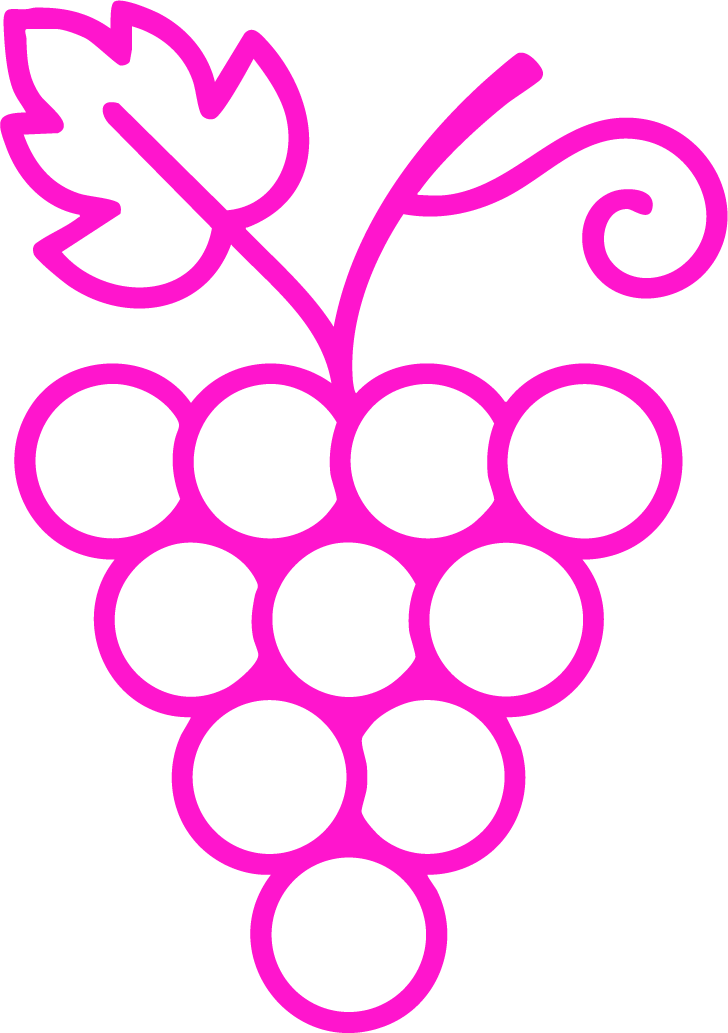Gamay
🔊 Pronunciation: gah-may
🔍 Quick Summary
A lively, fruit-forward red grape most famous for Beaujolais, known for juicy cherry flavors, vibrant acidity, and early drinking charm.
📜 History
Origin: First recorded in the 14th century in Burgundy, France — ancestry is debated but thought to be an old Burgundian variety unrelated to Pinot Noir.
Medieval Banishment: In 1395, Duke Philippe the Bold ordered its removal from Burgundy’s best vineyards for being “disloyal” compared to Pinot Noir.
Beaujolais Embrace: Thrived south of Burgundy in Beaujolais, where granite soils and warm summers suited its style.
20th-Century Revival: Gained global fame with Beaujolais Nouveau craze, making it a household name.
Modern Respect: Today celebrated for serious, terroir-driven crus with aging potential beyond Nouveau.
🧠 What to Know
Early-Ripening: Gamay ripens quickly, ideal for cooler climates.
Carbonic Maceration: Signature technique yielding juicy, low-tannin, aromatic wines.
Versatile Style: From easy-drinking Nouveau to structured, complex cru Beaujolais.
Global Plantings: Found in France, Switzerland, Oregon, Canada, Australia.
Affordable Quality: Offers Pinot Noir-like freshness without the price tag.
📍 Where It’s Found
🇫🇷 Beaujolais (France) – Granite + Continental = Bright, perfumed reds
Warm summers | 77–86 °F (25–30 °C) avg daytime highs
🇫🇷 Loire Valley (France) – Sand/Clay + Maritime = Lighter, floral styles
Mild climate | 68–77 °F (20–25 °C)
🇨🇭 Switzerland – Varied soils + Alpine = Fresh, mineral reds
Cool summers | 68–77 °F (20–25 °C)
🇺🇸 Oregon (USA) – Volcanic + Cool = Bright acidity, Pinot-like elegance
Cool-Mild Maritime (57–77°F / 14–25°C)
👅 Flavor & Style
Bright, crunchy reds with vibrant acidity and expressive fruit.
Color: Pale to medium ruby
Aromas & Flavors:
Primary: Cherry, raspberry, cranberry, violet
Secondary: Banana, bubblegum (carbonic), subtle spice
Tertiary: Earth, mushroom, dried fruit (with age)
Structure: Light to medium body, low to moderate tannin, high acidity
Body: Light to medium
Tannin: Low to moderate
Acidity: High
Alcohol: Typically 11–13%
🛠 Winemaking Notes
Classic for fresh, juicy reds with minimal oak.
Carbonic Maceration: Whole-cluster fermentation for fruity, low-tannin styles.
Stainless Steel/Foudre: Preserves freshness and fruit purity.
Minimal Oak: Some cru-level wines see neutral oak for added depth.
Blending: Rarely blended, but some experimentation outside France.
🍽 Food Pairing Ideas
Pairs well with dishes that match its acidity and brightness.
Savory: Charcuterie, roast chicken, grilled salmon
Cheese: Brie, Camembert, Tomme de Savoie
Unexpected: Thanksgiving turkey, ramen with pork belly, roast beet salad
🔗 Related Topics to Explore
🍇 Pinot Noir – Light-bodied sibling with earthy nuance
🛢 Carbonic Maceration – Juicy, fruit-driven fermentation magic
🌱 Granite Soils – Sharp drainage yields concentrated, mineral wines





